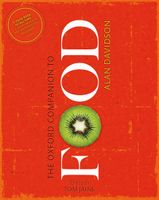Advertisement
Balm
Published 2014
The name balm is a shortened form of balsam, which is something different, a resinous preparation often but not necessarily derived from plants called balm.
Lemon balm is used as a flavouring herb. Its lemony aroma, more pronounced in fresh than in dried leaves, enables it to substitute in some contexts for lemon juice and makes it a refreshing addition to salads. It is used for soups, with fish, and in sauces; as a flavouring for milk and yoghurt and for certain drinks; and also, especially, to make balm tea. In the English countryside this balm tea was traditionally sweetened with honey; a nice touch, since Melissa is the Greek for honey bee and was given to the plant as its generic name because bees like it (as Virgil tells us—he grew thyme, lavender, and balm for the benefit of his bees).


